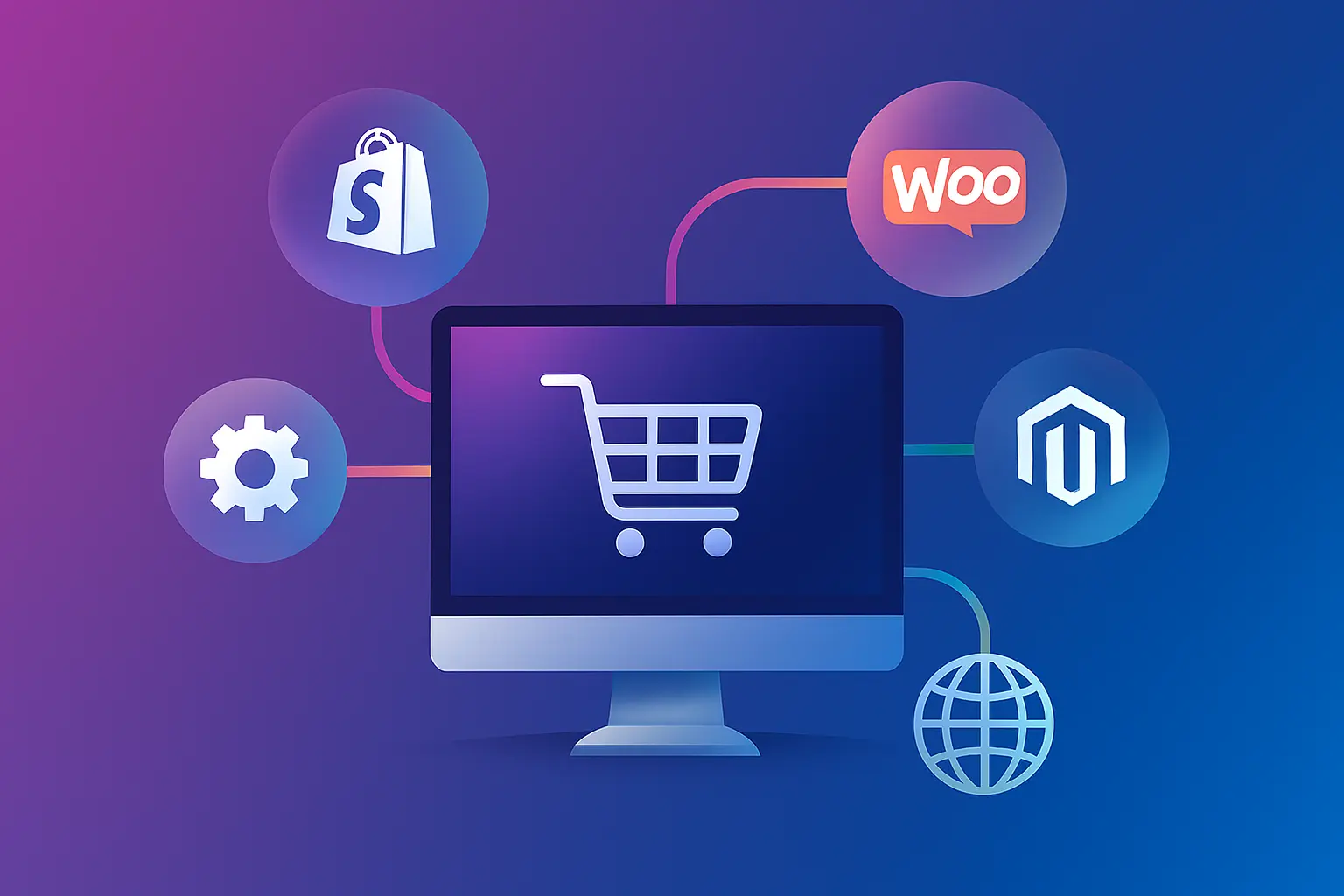Ecommerce Customer Service: A Comprehensive Guide (2025)
- July 10, 2019
- 13 mins read
- Listen

In today’s experience economy, customers aren’t just buying products; they’re investing in how those products make them feel.
Every interaction contributes to that experience, from the moment they land on your site to how you respond when something goes wrong. The real differentiator is the quality of support they receive along the way. That’s why eCommerce customer service has evolved from a reactive help desk to a critical part of the brand experience.
When businesses fail to deliver fast, consistent, and personalized support, it shows in cart abandonment, negative reviews, and vanishing customer loyalty. And as online stores scale, these gaps only widen unless they’re addressed with the right strategies and systems.
This comprehensive article unpacks what ecommerce customer service is, its challenges, and strategies to build a support experience that truly sets your brand apart.
What is ecommerce customer service?
Ecommerce customer service is the end-to-end support experience that an online brand provides to its customers, from pre-purchase inquiries to post-sale issues like tracking, returns, or refunds. It’s not limited to answering questions; it includes guiding shoppers during decision-making, resolving problems with empathy, and ensuring customers feel heard across every channel they use, whether it’s live chat, email, or social DMs.
What sets eCommerce customer service apart is that it happens in a digital vacuum. There’s no in-store staff to intervene when confusion arises. That means support becomes the only human touchpoint in the online shopping experience. Done well, it builds trust. Done poorly, it breaks the entire journey, no matter how great the product or pricing is.
Why is ecommerce customer service important?
Increases sales and conversions
Good eCommerce customer service directly influences purchase decisions by reducing hesitation and building buyer confidence.
When shoppers have questions before buying, quick and helpful support can be the difference between bounce and buy. According to a report by Forrester, 53% of U.S. adults are likely to abandon their online purchase if they can’t find a quick answer to their question.
Reduces abandoned carts
Timely support during checkout helps reduce cart abandonment and improves conversion rates.
Confusion about shipping, returns, or payments often causes customers to leave their cart. Live chat, proactive messaging, or chatbots can intervene in real time to resolve friction and recover the sale.
Boosts customer loyalty and retention
Exceptional customer service builds emotional loyalty and keeps buyers coming back.
A study found that increasing customer retention rates by just 5% can boost profits by 25% to 95%. Delivering consistently positive support encourages customers to return and spend more over time. And this eventually increases customer loyalty.
Strengthens brand reputation
Positive customer service experiences lead to better reviews, word-of-mouth, and brand credibility. Satisfied customers are more likely to share positive experiences and leave reviews, both of which shape your brand’s image. On the flip side, negative experiences spread fast and hurt trust.
Offers a competitive advantage
Strong customer service helps brands stand out when product and price are no longer enough.
In saturated markets, excellent service becomes a key differentiator. A seamless support experience can make the difference between you and a competitor offering the same product.
Improves cost efficiency
Effective support systems reduce long-term service costs while maintaining customer satisfaction. Self-service portals, AI chatbots, and ticket automation help teams handle higher volumes with fewer resources, cutting costs while improving customer response time and satisfaction.
What are the challenges of customer service in ecommerce?
There are a few challenges ecommerce customer service faces, including high support volume, delayed response, lack of omnichannel support, and more.
High support volume
Rapid growth leads to a flood of customer questions that many teams can’t handle efficiently.
Whether it’s order status, return requests, or product queries, the volume spikes around promotions, holidays, or product launches. Without scalable systems in place, response times drop, and so does satisfaction.
A Gorgias report found that top-performing eCommerce stores see up to 70% of their support volume tied to repetitive, easily automatable queries.
Delayed or no real-time responses
Customers expect immediate answers, even outside business hours. Long response times are one of the biggest deal-breakers. If support isn’t available instantly via chat or messaging, customers are likely to abandon their purchase or take their complaint to social media.
According to HubSpot, 90% of customers rate an “immediate” response as important when they have a support question.
Disconnected support across channels
Handling support on multiple platforms without a unified view causes confusion and missed messages. Your customer may start a conversation on Instagram and follow up via email and expect you to know the full story. Without an omnichannel system, agents lack context, and customers feel like they’re starting from scratch each time.
Lack of personalization
Customers want to be treated like individuals, not ticket numbers. Canned replies and a generic tone might be fast, but they kill emotional connection. When agents don’t personalize responses or lack access to past interactions, the experience feels cold and transactional.
Complex return and refund experiences
Returns are a core part of eCommerce, but they’re often the weakest part of the customer journey.
Lack of clarity on return windows, refund timelines, or the process itself creates unnecessary friction. A poor return experience often leads to churn, even if the product itself was good.
Language and time zone gaps
A global audience requires multilingual customer support and asynchronous service, but many brands aren’t prepared. If you only support one language or a narrow time zone window, you risk alienating a large share of potential customers.
Lack of proactive communication
Most support teams wait for complaints instead of preventing them. Customers shouldn’t have to ask, “Where’s my order?” before you update them. Proactive alerts, updates on known issues, or order delays help build trust and reduce avoidable tickets.
8 strategies to build an effective ecommerce customer service
There are several ways to build a good ecommerce customer service by providing real-time responses, 24/7 availability, omnichannel support, and more.
1. Create a self-service knowledge base for instant answers
A self-service knowledge base is one of the easiest ways to reduce support volume while improving customer satisfaction. By offering clear FAQs, how-to guides, and return instructions, you give customers the power to solve common issues on their own anytime, without needing to wait.
It’s important that this help center is searchable, mobile-friendly, and updated regularly. Even a simple article on “How to track your order” can save dozens of repetitive tickets per week.
2. Offer real-time support with Live Chat
Live chat gives customers immediate access to help while they’re still browsing or about to make a purchase. It works especially well during checkout, where small issues like confusion about payment methods or sizing can cause hesitation or lead to abandoned carts.
Unlike email or phone, live chat happens in real time. That makes it one of the most powerful tools to keep customers engaged and reduce drop-off. According to Harvard Business Review, 81% of customers try to resolve issues on their own before reaching out to a live agent.
3. Use AI-powered chatbots for 24/7 availability
AI-powered chatbots help cover the gaps when your team is offline. They can handle repetitive questions like order status or return policy instantly, and around the clock. This makes sure your customers aren’t left waiting, even during off-hours or peak seasons.
For best results, your chatbot should be trained on actual customer queries and offer a smooth handoff to a live agent when needed. It’s not about replacing humans. It’s about helping both your team and your customers save time.
4. Centralize all support with an omnichannel platform
An omnichannel customer service platform consolidates all conversations from website chat to Instagram DMs in one place. This avoids missed messages and repetition, giving agents a full view of customer interactions across channels. A unified inbox improves efficiency and creates a consistent experience across every touchpoint.
5. Implement a ticketing system to organize and prioritize requests
As support volume grows, tracking everything manually becomes impossible. A ticketing system brings structure to logging every issue, assigning it to the right person, and tracking progress until it’s resolved.
This helps your team stay organized, avoid duplicate work, and meet service-level agreements (SLAs). For the customer, it provides confidence that their issue won’t fall through the cracks.
Learn more: What is a Ticketing System? How Does It Work & Examples
6. Personalize support with contextual customer data
Customers appreciate fast answers, but what really stands out is when those answers feel personal. To provide personalized customer service, using CRM and past order history allows your team to greet customers by name, reference their last purchase, and suggest solutions that actually match their situation.
It’s a small shift, but it can turn an average interaction into one that feels human, thoughtful, and brand-worthy.
7. Train your support team in soft skills, not just product knowledge
Support agents often know your products inside out, but that’s not always enough. It’s the soft skills that make the biggest difference: active listening, staying calm under pressure, and knowing how to show empathy, especially when a customer is frustrated.
Regular training in these areas improves satisfaction scores and helps your brand stand out in how it treats people, not just how it solves problems.
8. Gather feedback and use it to improve continuously
Every support conversation is a learning opportunity. Post-chat surveys, review comments, and even complaints can highlight gaps in your process or communication.
Use this feedback to fix recurring issues, improve product content, or adjust your policies. It also shows customers that you’re listening and that their voice leads to change.
Learn more: How to Ask for Customer Feedback: 7 Best Methods & Examples
Examples of customer service in ecommerce
The following real-world examples show how ecommerce organizations across different regions improved their customer service experience by adopting REVE Chat as their unified customer engagement platform. While the underlying technology remained the same, each organization used it in a way that suited its operational model and customer needs.
Legrand
Legrand, a global specialist in electrical and digital building infrastructures.
Challenge:
Legrand needed a flexible support system to handle frequent customer queries related to product information, FAQs, and technical troubleshooting without overwhelming their support agents.
Solution:
- Integrated live chat to offer real-time assistance
- Deployed AI-powered chatbots to automate responses for common questions
- Provided instant product information through automated workflows
- Freed agents to focus on complex issues by handling routine queries automatically
Results:
- Reduced customer wait times significantly
- Increased customer satisfaction scores
- Improved support team productivity by automating routine inquiries
Public Gold
Public Gold, a leading gold trading and financing platform.
Challenge:
Managing a wide range of customer needs—from order tracking and cancellations to marketing promotions and Islamic financing services—posed complexity and placed heavy demands on their support team.
Solution:
- Enabled real-time order tracking and cancellation requests via chatbot
- Provided self-service issue reporting to reduce agent load
- Automated marketing campaigns, referral programs, and lead capture flows
- Delivered educational content on Islamic financing products
- Shared payment plan summaries and logged payment-related issues
- Offered step-by-step buying assistance and product availability alerts
- Automated ticket creation and escalation for unresolved issues
Results:
- Reduced human intervention in routine queries
- Increased lead generation through chatbot-driven campaigns
- Faster resolution of critical issues via automated ticket escalation
- Enhanced overall customer experience and operational efficiency
Le Reve
Le Reve, a luxury lifestyle and eCommerce brand.
Challenge:
Le Reve aimed to deliver high-touch, personalized support while handling a growing volume of customer interactions across various digital channels.
Solution:
- Unified customer communication across website chat, social media, and messaging apps
- Used AI chatbots to handle FAQs and simple requests automatically
- Implemented ticketing workflows for smooth escalation and follow-up
- Balanced automation with personalized human support to maintain brand voice
Results:
- Faster response times across all channels
- Consistent service quality and customer experience
- Increased customer loyalty and retention
- Balanced automation with personalized human support
Top 3 tools to consider for customer service in ecommerce
There are many ecommerce customer service tools available in the marketplace. To not overwhelm you, we have compiled three customer service platforms for ecommerce.
| Name | Best For | Pricing |
| REVE Chat | Flexible and feature-rich, omnichannel customer support with live chat, AI chatbot, and ticketing | 15$ / agent / month |
| Help Scout | Email-centric helpdesk with team collaboration workflows | $55 / month (up to 100 contacts) |
| Hiver | Gmail-based shared inbox with chat, WhatsApp & AI tools | $24 / agent / month |
1. REVE Chat
REVE Chat is the only platform that combines live chat, AI chatbot, omnichannel messaging, and ticketing into one unified workspace, purpose-built for growing eCommerce brands.
From first interaction to final resolution, it helps your team engage, convert, and support customers across channels like your website, WhatsApp, Facebook, Instagram, and more.
Key features:
- Live chat with co-browsing: Offer real-time help while customers are browsing. Solve product confusion or checkout issues instantly.
- AI-powered chatbots: Handle repetitive queries like order status, returns, and shipping delays even when your agents are offline.
- Omnichannel messaging: Manage conversations from web, Messenger, Instagram, Telegram, and WhatsApp in one unified inbox.
- Integrated ticketing system: Assign, prioritize, and track support tickets from a central dashboard. Ensure nothing slips through the cracks.
- Customizable chat widgets: Match your brand look and guide users with targeted messages during their journey.
- Smart triggers & routing: Automatically engage visitors based on behavior and route them to the right agent or department.
2. Help Scout
Help Scout is an email-first helpdesk platform designed to streamline customer support with a focus on collaboration and simplicity. It enables teams to manage customer conversations through email, live chat, and knowledge base, all in one place. Help Scout emphasizes team workflows and internal collaboration to improve response times and customer satisfaction.
Key features:
- Shared inbox with collision detection and team workflows
- Live chat and integrated knowledge base
- Automation and tagging for ticket management
- Customer profiles with full conversation history
- Reporting and analytics to track team performance
- Multi-channel support, including email and chat
3. Hiver
Hiver is a Gmail-based customer service tool that turns your Gmail inbox into a shared helpdesk, enabling teams to manage support requests without leaving the email platform. It integrates with chat and WhatsApp and offers automation and AI features to improve efficiency and speed up issue resolution, especially suited for Google Workspace users.
Key features:
- Shared Gmail inbox with assignment and collaboration
- Multi-channel support including email, chat, and WhatsApp
- AI-powered automation for ticket tagging and routing
- SLA management and collision detection
- Customer history and conversation tracking
- Easy integration with Google Workspace tools
Conclusion
eCommerce customer service has evolved from being a reactive function to a proactive driver of growth. It plays a direct role in improving customer satisfaction, reducing churn, and increasing repeat purchases. As customer expectations rise, providing fast, consistent, and personalized support across channels is no longer optional; it’s essential.
Brands that prioritize support not only retain more customers but also build stronger loyalty over time. Whether it’s through self-service, real-time chat, or automation, every step you take to improve service creates a smoother experience for your customers and a more scalable operation for your team.
If you’re ready to offer faster, smarter, and more connected support experiences, take a free trial or book a demo today.
Frequently Asked Questions
Best practices include offering omnichannel support (chat, email, social), setting clear response SLAs, using self-service tools like FAQs, training agents in soft skills, and leveraging automation for routine inquiries.
Look for platforms that integrate with your eCommerce stack (Shopify, WooCommerce), support omnichannel messaging, provide automation/chatbots, offer analytics, and scale with your growth.
Customer service has a direct impact on conversions and retention. 89% of consumers are more likely to make another purchase after a positive support experience.
Both. Self-service can handle up to 90% of common queries, while live chat helps reduce cart abandonment and increases conversions by providing real-time assistance during decision-making.
A ticketing system ensures no customer request slips through. It organizes inquiries, prioritizes issues, and enables teams to track, assign, and follow up efficiently—especially valuable for scaling teams.
Absolutely. AI chatbots handle high volumes of repetitive queries, offer instant answers, and operate 24/7. Over 62% of consumers prefer chatbots for quick responses.




